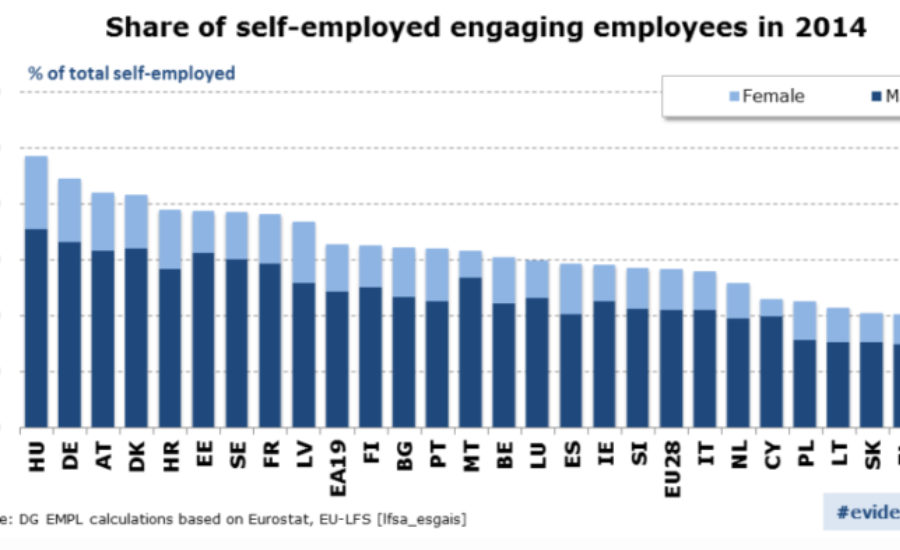The 1980s in the UK was a pivotal era for the evolution of employment models, particularly in the context of contracting and self-employment. It was a time when entrepreneurship surged, and people sought new ways to manage their work and income, driven by the political and economic policies of the Thatcher government. One of the most significant developments of this period was the SC60 scheme, which applied to subcontractors, especially within the construction industry. The distinction between SC60 workers and the self-employed became a topic of considerable importance, with both groups navigating different tax systems, rights, and financial obligations. This article will dive into the key differences between SC60 vs Self-Employed UK 80’s, exploring their tax implications, employment rights, and the long-lasting impact on the UK’s workforce.
SC60 in the UK Tax System
SC60 was a tax deduction scheme introduced by the UK government in the 1970s, which extended into the 1980s, particularly designed for subcontractors. The system was predominantly used in the construction industry and aimed to ensure that contractors would not evade taxes. SC60 workers were issued a special voucher (known as SC60) by their employers, which detailed the amount of tax that had been deducted from their earnings before payment. This system sought to ensure that the Inland Revenue (now HMRC) could monitor and secure tax contributions from subcontractors, many of whom worked independently or on short-term contracts.
SC60 wasn’t a full employment contract. It gave businesses an opportunity to hire contractors without fully employing them, which had tax benefits for both parties. However, it also meant that SC60 workers had fewer rights and protections compared to those classified as fully employed. Their status hovered somewhere between being fully employed and self-employed, adding complexity to the taxation and legal landscape.
Origins of SC60
The SC60 scheme emerged as part of the broader Construction Industry Scheme (CIS), introduced in the UK to tackle tax avoidance among contractors and subcontractors. The system addressed concerns that contractors were not paying sufficient taxes or making false declarations. By having tax deducted at source under SC60, the government effectively ensured that these contractors paid their due share. In the construction industry, where temporary contracts and freelance work were common, this was particularly important.
Self-Employment in the UK During the 80’s
The 1980s were an era of self-employment boom in the UK. With Margaret Thatcher’s policies aimed at reducing state intervention and promoting free-market principles, many individuals were encouraged to start their own businesses. The self-employed, who worked across a variety of industries, enjoyed the freedom of setting their own hours, deciding their workload, and controlling their income. However, they also bore the burden of managing their own taxes, pensions, and benefits, which was a stark contrast to the more managed environment offered to SC60 subcontractors.
The Rise of Small Businesses in the 80s
The entrepreneurial spirit of the 1980s meant that many workers sought to establish small businesses. Thatcher’s government implemented policies such as tax cuts and deregulation, which spurred the growth of small enterprises and self-employment. This period saw a significant rise in sole traders and partnerships, who could take advantage of the economic environment to flourish. While SC60 workers were tied to a specific tax structure and industry, self-employed individuals enjoyed more autonomy across diverse sectors.
SC60 vs Self-Employed: Key Differences
The primary distinction between SC60 workers and the self-employed during the 1980s was in how they were taxed and managed by the state. SC60 workers had tax deducted at source, much like employees, but without the benefits and rights typically associated with employment. On the other hand, self-employed individuals had to manage their own tax contributions through self-assessment, which gave them greater flexibility but also more responsibility.
Self-employed individuals enjoyed the freedom of choosing their work and setting their schedules, whereas SC60 workers were often tied to contracts and had less control over their working conditions. While SC60 was primarily a measure to combat tax evasion, self-employment became a symbol of the rising entrepreneurial spirit of the era.
SC60 Tax Deductions Explained
Under the sc60 vs self employed uk 80’s scheme, contractors deducted tax from payments made to subcontractors before passing the remainder onto them. The tax deducted was a set percentage, ensuring that the subcontractor contributed to the national tax revenue. The contractor was responsible for submitting SC60 vouchers to the tax authorities, proving that tax had been correctly deducted.
For many SC60 workers, this was seen as both a benefit and a drawback. While it simplified the tax process by deducting taxes at source, it also limited the amount of control workers had over their earnings and tax planning. Self-employed individuals, on the other hand, could make strategic financial decisions to minimize their tax burdens through deductions and expenses, provided they had a solid understanding of the tax system.
Advantages of SC60 for Employers
For businesses, the sc60 vs self employed uk 80’s system provided a streamlined way to employ skilled labor without the obligations of full employment. This was particularly advantageous for construction companies, where projects required flexible, short-term labor rather than long-term employees. The SC60 scheme allowed employers to ensure that taxes were paid while avoiding the complexities of providing employee benefits or long-term commitments.
Employers had the advantage of hiring subcontractors without being liable for National Insurance contributions or holiday pay. This made SC60 workers a cost-effective solution for businesses that needed skilled labor on a project basis but didn’t want to deal with the administrative and financial burdens of traditional employment.
Self-Employed Tax System in the 80s
In contrast to SC60 workers, self-employed individuals were required to manage their own taxes. They needed to file a self-assessment tax return each year and calculate their earnings, expenses, and tax liability. This system allowed for greater financial independence, but it also required self-employed individuals to be diligent in record-keeping and understanding tax laws.
Self-employed individuals could deduct a range of business expenses, including office costs, travel expenses, and materials. This often made self-employment more financially appealing, though it carried the risk of penalties if tax filings were inaccurate or delayed.
The Construction Industry Scheme (CIS)
The Construction Industry Scheme (CIS), of which SC60 was a part, was a framework established by the UK government to regulate tax collection within the construction sector. The scheme required contractors to register and ensure that their subcontractors were taxed appropriately. The SC60 vouchers issued were a core part of this system, helping to streamline the process of tax deduction for construction workers.
For many in the construction industry, this scheme was a necessary evil—ensuring tax compliance but also adding administrative work. However, it was successful in preventing widespread tax evasion and helped shape future employment schemes for contractors.
SC60 in Construction: A Special Case
The SC60 scheme was predominantly used within the construction industry due to the high number of subcontractors employed on temporary contracts. The transient nature of work in this sector meant that workers often moved from project to project, making traditional employment contracts impractical. SC60 allowed for flexibility in labor while maintaining a degree of tax oversight.
Workers in other industries, however, were less likely to encounter the SC60 scheme. It was highly specific to construction, where the need for a structured approach to subcontracting was most pressing.
Conclusion
The SC60 scheme and self-employment in the UK during the 1980s represent two distinct approaches to managing independent workforces. While SC60 was a targeted tax mechanism aimed primarily at the construction industry, self-employment became a broader cultural movement driven by the rise of entrepreneurship and small businesses. Both models had significant implications for taxation, workers’ rights, and the UK economy during this transformative period. The legacy of SC60 can still be felt in today’s tax systems, with modern equivalents continuing to influence how subcontractors and the self-employed manage their financial obligations.
FAQs
What was the SC60 scheme in the UK?
The SC60 scheme was a tax deduction system introduced primarily for subcontractors in the UK construction industry.
How did SC60 differ from being self-employed in the UK during the 1980s?
The main difference between SC60 workers and the self-employed was in how taxes were managed. SC60 workers had tax deducted at source by the contractor, similar to how an employee would.
Why was the SC60 scheme particularly relevant to the construction industry?
SC60 was primarily aimed at the construction industry due to its high reliance on subcontractors and short-term contracts.
What were the advantages of being self-employed in the UK during the 80s?
Self-employment in the UK during the 1980s offered individuals more autonomy over their work, allowing them to choose their hours, clients, and income. Entrepreneurs and freelancers enjoyed the freedom of managing their own businesses and could take advantage of tax deductions for business expenses.
How did SC60 affect workers’ rights compared to self-employed individuals?
SC60 workers had fewer employment rights compared to both employees and fully self-employed individuals.
What led to the decline of the SC60 scheme?
The SC60 scheme was phased out in the 1990s due to changes in tax legislation and the introduction of more modern tax frameworks.











